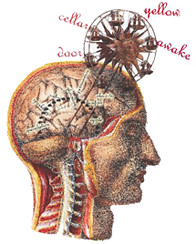What is Mental Retardation?
 According to the definition by the American Association on Mental Retardation (AAMR), an individual is considered to have mental retardation based on the following three criteria: intellectual functioning level (IQ) is below 70-75; significant limitations exist in two or more adaptive skill areas; and the condition manifests before the age of 18.
According to the definition by the American Association on Mental Retardation (AAMR), an individual is considered to have mental retardation based on the following three criteria: intellectual functioning level (IQ) is below 70-75; significant limitations exist in two or more adaptive skill areas; and the condition manifests before the age of 18.
Adaptive skill areas are those daily living skills needed to live, work, and play in the community. The new definition includes ten adaptive skills: communication, self-care, home living, social skills, leisure, health and safety, self-direction, functional academics, community use, and work.
Adaptive skills are assessed in the person’s typical environment across all aspects of an individual’s life. A person with limits in intellectual functioning who does not have limits in adaptive skill areas may not be diagnosed as having mental retardation.
Children with mental retardation grow into adults with mental retardation; they do not remain “eternal children.”
Mental Retardation is……..
10 times more prevalent than cerebral palsy
28 times more prevalent than neural tube defect such as spina bifida
25 times more prevalent than total blindness
50 times more prevalent than total deafness
In the world:
According to the World Health Organization (1994); approximately 156 million people, or 3 percent of the world’s population have mental retardation. Prevalence by continent:
| Africa | 20,310,000 |
| Australia | 5,25,000 |
| Asia | 97,710,000 |
| Europe | 15,390,000 |
| Latin America | 13,800,000 |
| North America | 8,610,000 |
Mental retardation knows no boundaries. It cuts across the lines of racial, ethnic, educational, social and economic backgrounds. It can occur in any family. One out of ten American families is directly affected by mental retardation.
What are the causes of mental retardation?
(Information by The Arc)
Mental retardation can be caused by any condition that impairs development of the brain before birth, during birth, or in childhood years. Several hundred causes have been discovered, but in one-third of the people affected the cause remains unknown. The three major causes of mental retardation are Down syndrome, fetal alcohol syndrome, and fragile X syndrome. The causes can be categorized as follows:
Mental retardation is on the rise in the United States. The rate of children born with fetal alcohol syndrome has increased from 1 per 10,000 births in 1979 to 6.7 per 10,000 births in 1993. Malnutrition, rubella, glandular disorders and diabetes, and many other illnesses affecting the mother during pregnancy may result in a child being born with mental retardation. Physical malformations of the brain and HIV infection originating during prenatal life may also result in mental retardation.
Problems at birth:Although any birth condition of unusual stress may injure the infant’s brain, premature birth, and low birth weight predict serious problems more often than any other conditions.
Problems after birth: Childhood diseases such as whooping cough, chicken pox, and measles can damage the brain, as can accidents such as a blow to the head or near drowning. Mercury and lead poisoning can cause irreparable damage to the brain and nervous system.
Poverty: Children in poor families may suffer mental retardation because of malnutrition, disease-producing conditions, inadequate medical care, and environmental health hazards. Also, children in disadvantaged areas may be deprived of many common cultural and day-to-day experiences provided to other young children. Research suggests that such under-stimulation can result in irreversible damage and can serve as a cause of mental retardation.
Can mental retardation be prevented?
During the past 30 years, significant advances in research have prevented many cases of mental retardation. For example, every year in the U.S., we prevent: 250 cases of mental retardation due to phenylketonuria (PKU) by newborn screening and dietary treatment; 1,000 cases of mental retardation due to congenital hypothyroidism by newborn screening and thyroid hormone replacement therapy; 1,000 cases of mental retardation of deafness by use of anit-Rhogam to prevent Rh disease and severe jaundice in newborn infants; 4,000 cases of mental retardation due to measles encephalitis through measles vaccination; and untold numbers of cases of mental retardation caused by rubella during pregnancy through rubella vaccination. (Statistics from The Arc, 1993).
New recommendations for worldwide treatment and prevention of mental retardation and developmental disabilities are continuously being developed. Today, there are improved ways to manage head trauma, asphyxia (lack of oxygen), and infectious diseases (e.g., polio and measles) to reduce their adverse effects on the brain. Early intervention programs with high risk infants and children have shown remarkable results in reducing the predicted incidence of subnormal intellectual functioning. Finally, early prenatal care, and newborn screening programs have provided effective reductions in the incidence of mental retardation.